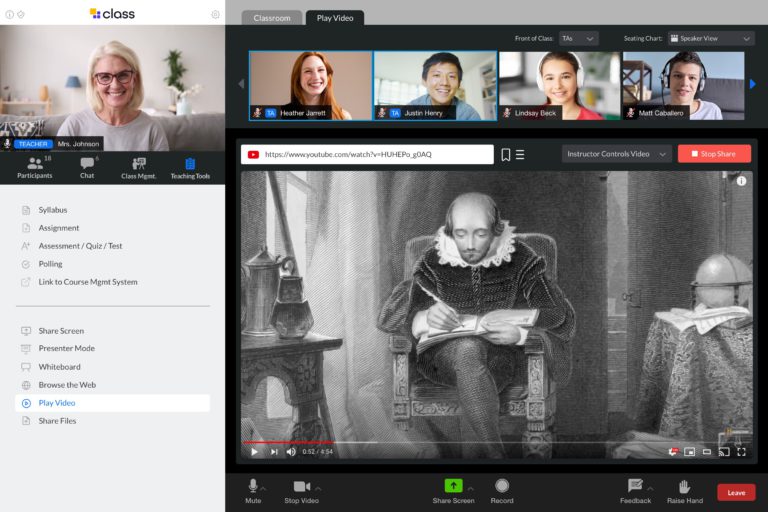


For many K-12 teachers, teaching experiences over the past two years have really not reflected what they thought they signed up for when they decided to be a teacher. As organizations of all types are increasingly seeing, teachers are deciding that this new way of working just isn’t for them—and they’re choosing to leave the profession, or the workforce entirely.
In an Education Week article, researcher and author Lora Bartlett shares what she has learned through research following 75 teachers during the pandemic. Of the 75, 15 have either left the profession or are considering doing so. That’s a 12% increase in the typical annual attrition rate of 8%, she says.
Their reasons for leaving are similar: “They feel thwarted in their efforts to do well by their students, and they question staying in a profession that disregards their professional perspective and judgment,” Bartlett writes. Those in hybrid settings felt the pressures the most. Teaching via just one mode, teachers said, “positively affected their capacity to engage students and cover more content.”
In Texas, after the holiday break, Texas Public Radio reported that one district “reported 1260 absences out of 13,000 employees from its 125 campuses.”
What’s behind the exodus?
The reasons that many teachers are leaving the profession are likely similar to the reasons that multiple media outlets are reporting across all types of workers. Inc., for instance, released a list of five reasons behind the great resignation, including:
Separately, Cengage Group’s The Great Resigners report quantifies the primary factors driving employees to leave their jobs. The top three include:
Wesley Samples, co-founder and COO of Sora Schools, says that this is just the beginning. “Teachers are weary,” he says. “They’ve been underrecognized and underappreciated for far too long, and no number of ‘Teacher Gratitude’ days will make up for the fact that they’ve agreed to absurd asks in the pursuit of education for all.”
Teaching entirely online or in a hybrid environment has definitely taken its toll on some teachers. But while some despise the prospect of teaching online others thrive.

One of the big benefits that online learning can provide for both school districts and instructors is the ability to cast a wide net for teachers to help combat a growing teaching shortage. In New York, for example, “Elevate K-12, a live streaming instruction company, is expanding its services in the state of New York to combat the teacher shortage crisis by bringing the country’s best teachers seamlessly to students in New York.”
But there are other benefits as well.
Jane Ferris, assistant head of school at Laurel Spring School, says that teachers love online learning for the same reasons that students do. “They experience many of the same benefits connected to time, place, and pace,” she says. “Teachers feel empowered and energized because they do not have the mundane daily tasks associated with onsite education and are able to focus solely on teaching and learning.”
In addition, Ferris notes that “teaching online also increases a teacher’s exposure to students in different geographical areas and of diverse backgrounds.” And, of course, in a world continuing to be marked by COVID impacts, safety concerns in schools are top-of-mind. Teaching online provides the added benefits of safety and security, Ferris says.
Freedom and flexibility also are big benefits in the virtual teaching environment.
Jessica Robinson, an educator and content creator, with The Speaking Polymath, a blogging platform covering a range of topics, including education, believes that virtual learning has given teachers complete freedom to follow their own course of teaching. “They are no more bound to follow the traditional modes of teaching or follow in the footsteps of their seniors. They have complete freedom to employ all the resources they can find in innovative ways and set out on an engaging educational journey with their students,” Robinson says. “The very thought of having all this freedom should energize teachers and they should exercise their freedom. If they do, teaching will become an exciting saga for them, and they’ll naturally feel motivated to stay in their profession.
School systems and administrators, of course, can have a significant positive impact on teachers’ satisfaction, commitment, and longevity.
With teachers retiring and leaving the profession in droves, schools and districts need to empower, equip, and energize teachers to teach in fun and innovative ways, including the setting and pace they feel works best. There is opportunity in virtual learning for teachers to feel safe and energized to be creative in who they reach, who they teach, and how they do it. There are three big buckets of opportunity to create an environment where teachers feel safe, valued and have opportunities for personal and professional growth.
Prioritizing Health and Safety
Administrators are in the tough position of trying to balance the needs and demands of teachers, students, and parents when it comes to keeping all both safe and satisfied with the learning environment whether in-person or virtual.
“Schools need to be prioritizing health and safety and restore the faith of the teacher community,” says Samples. It’s important for schools to clearly communicate what they’re doing and why—and to listen to and address concerns teachers and others may have.
In fact, listening is another top priority to help keep teachers on board and engaged.
Starting Conversations—and Listening
Teachers need to have an opportunity to share input—in fact, they need ample opportunities to connect with administrators to voice their concerns and share their ideas for providing a safe and effective learning environment where learning will occur.
If teachers feel unheard, Samples says, “we‘ll see increased strikes and walkouts, followed by parents pulling their kids from schools that can’t adapt to their needs.”
A final area of opportunity—growth and development.
Opportunities for Growth and Development
The American Staffing Association (ASA), in collaboration with Harris Poll, recently released its latest Workforce Monitor which indicates that training programs are an important factor for employees—in fact, they say: “80% of U.S. adults consider an employer’s job training programs an important factor when accepting a new job, just 39% say their current employer is helping them gain new skills in their current profession.”
For teachers who were rapidly thrust into what was for many an entirely unfamiliar learning environment, training is especially important and the need for training is both immediate and ongoing.
Addressing the issues that are important for teachers and other staff members—safety, opportunities for input, and access to ongoing professional development, can help administrators stem the tide of a mass exodus. Now is the time to begin seeking input to understand what teachers value and consider how to provide it to them in ways that feel genuine and personalized.


Get our insights, tips, and best practices delivered to your inbox

Sign up for a product demo today to learn how Class’s virtual classroom powers digital transformation at your organization.

Features
Products
Integrations